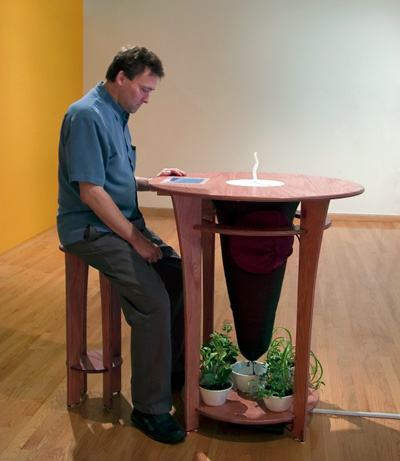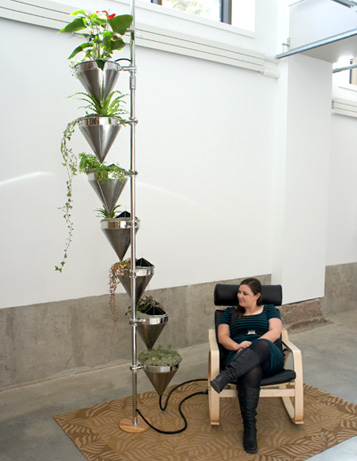The Ohio State University, Art & Technology & School of Architecture Vermiculture Furniture |
Photos | Carmen login | |||
Worms
are the intestines of the soil – Aristotle
Course Description
Course Meeting Time and Locations
Instructors
Course Content and Procedures 10 week course with evening meetings once weekly, to learn from agriculture experts, discuss technical requirements, analyze models, and present & review design proposals. The course is also a workshop dedicated to constructing each student’s prototype. Learning objective
Requirements and Evaluation
Bibliography
Attendance policy
Disability policy
Academic misconduct
|
|||||
| Schedule overview | ||||||||||
| DATE | TOPICS and class activities | HOMEWORK to do, read, watch, before class | ||||||||
TUES Jan 8 |
Designing for worms and people:
basic
vermicomposting, artful vermicomposting and working vermiponics experiments |
Read: Worm
Share, 2012, The Sustainability Review |
||||||||
TUES Jan 15 |
Discussion of readings and initial ideas |
Read: Less Waste, More
Soil, chapter 10 in The Urban
Food Revolution book. (in Carmen) |
||||||||
TUES Jan 22 |
Students present and discuss design concepts |
Prepare: drawings
and/or models for presentation |
||||||||
TUES Jan 29 |
Students present revised design concepts, decide on whether you are working in a team by today. |
Prepare: revised drawings and/or models for presentation |
||||||||
TUES Feb 5 |
Final designs due for class review |
Complete: models and drawings |
||||||||
TUES Feb 12 |
Talk by Rhonda Sherman, Solid waste specialist and educator from North Carolina University. |
Prepare: revised drawings and/or models to show and discuss with Rhonda Sherman. |
||||||||
TUES Feb 19 |
Progress presentations |
Work: on building your projects |
||||||||
TUES Feb 26 |
Progress presentations | Work: on building your projects | ||||||||
| TUES Mar 5 | Progress presentations | Work: on building your projects | ||||||||
| TUES Mar 19 | Progress presentations | Work: on building your projects | ||||||||
| MON April 1 | Compostium event 5:30 - 7:30pm at Knowlton | We think we will be able to set up our projects this evening to be a part of this event - more details to come. | ||||||||
| TUES April 2 | Final, built work due for review | Complete your project before class and have it set up ahead of time for the final review. Review will be at Knowlton Hall lobby area near the big stairs. Our review committee guests will be: Katherine Bennett, Landscape Architecture faculty at OSU and Bart Overly, Architect. | ||||||||
| This schedule is subject to change - check Carmen and stay alert in class for updates as we go. | ||||||||||
|
|
||||||||||
|
Related blogs, articles, videos and other online resources
Worms and composting in the news
|
||||||||||
The Ohio State University, Art & Technology & School of Architecture |
||||||||||


